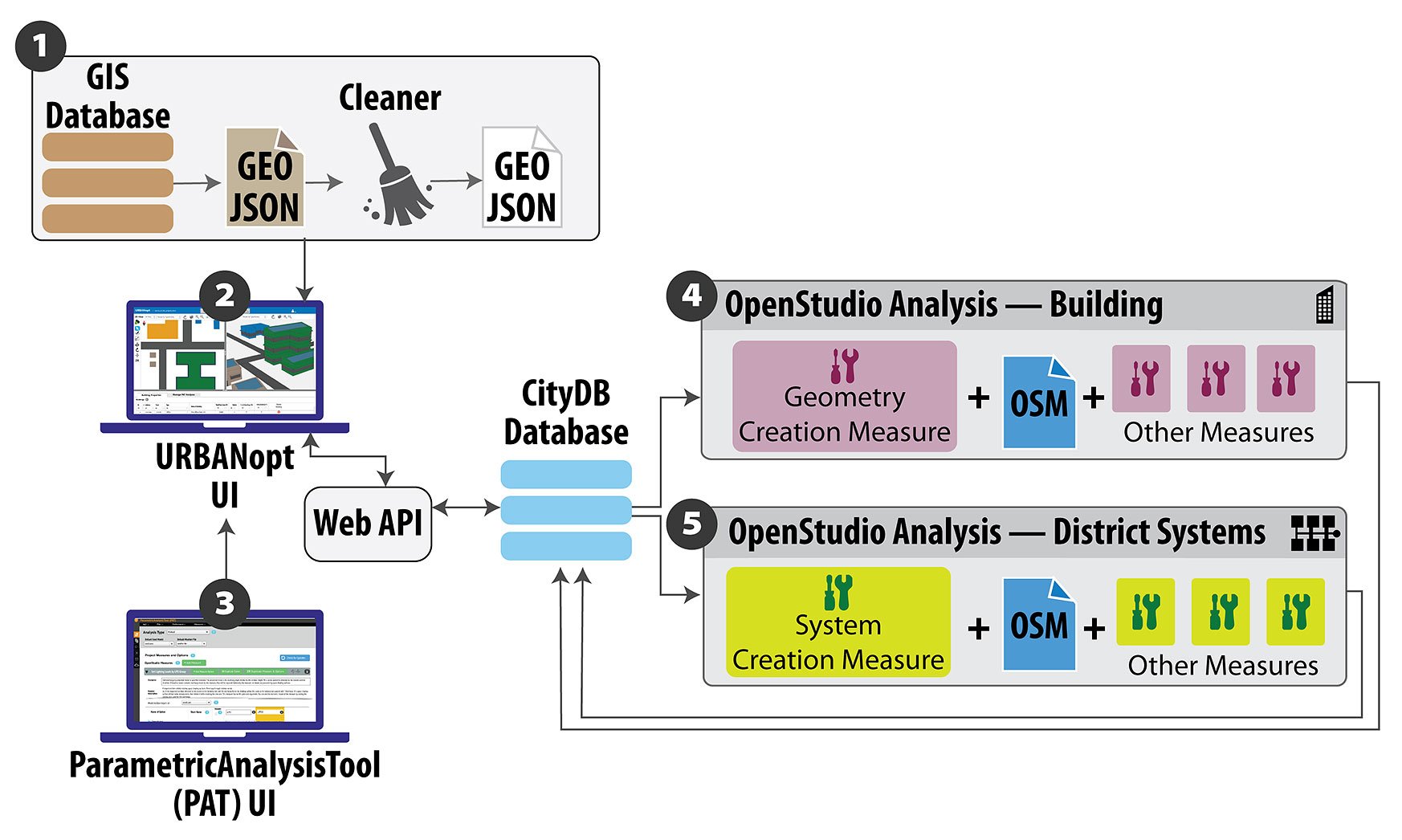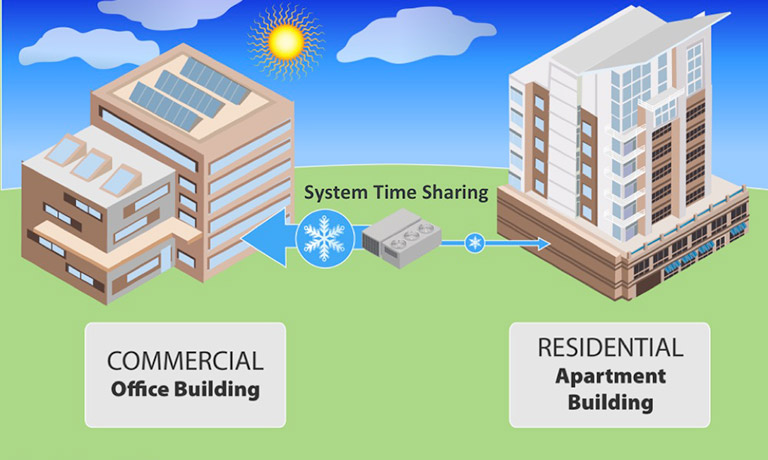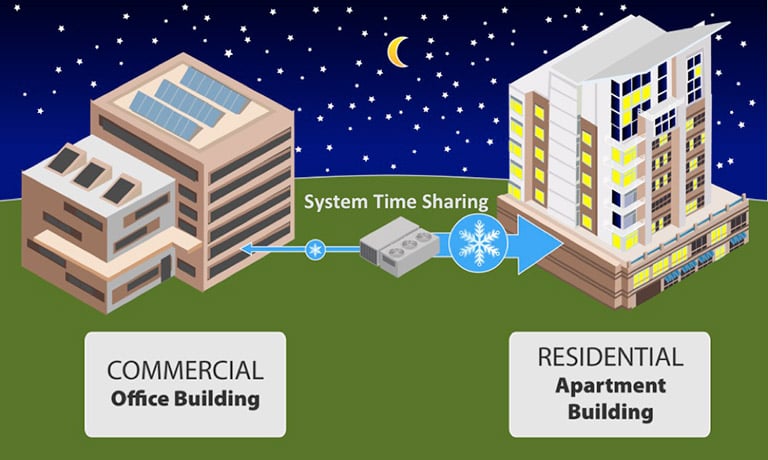URBANopt Advanced Analytics Platform
URBANopt™ is an advanced analytics platform for high-performance buildings and energy systems within one geographically cohesive area within a city (e.g., a city block or district).
URBANopt is being developed by NLR to investigate:
- Detailed energy tradeoffs between building locations and geometry
- Building energy efficiency features
- Building and district energy storage strategies and technologies
- Aggregated grid services such as dynamic and responsive loads
- District energy system locations
- District energy system performance characteristics to identify best approaches for reaching site-wide energy goals.
URBANopt (Urban Renewable Building and Neighborhood optimization) modeling capabilities leverage the U.S. Department of Energy's open-source building energy modeling ecosystem of OpenStudio® and EnergyPlus™ (see Figure 1). Once a critical level of functionality is achieved, the aim is to make the underlying URBANopt workflows and measures (primarily items 4 and 5 in Figure 1) open-source such that they can be leveraged by the broader urban energy modeling community. Active partnerships to apply URBANopt for specific districts/neighborhoods, utility distribution feeders, and technology solutions are currently underway. NLR also aims to partner with A) private-sector software developers interested in creating applications and user interfaces that utilize the URBANopt advanced analytics platform and B) academic institutions interested in advancing district-scale energy science and analytics.

Figure 1. URBANopt advanced analytics platform architecture.
High-Performance Energy Districts
There are many potential benefits to approaching energy efficiency and renewable energy at the district scale. For example, additional energy and cost savings may be achieved in districts through:
- Load Diversity: Especially in mixed-use districts, different buildings may peak in energy consumption at different times. In certain cases, shared district thermal energy systems can more efficiently and cost-effectively serve buildings than approaches where each building is served by its own heating, ventilating, and air conditioning (HVAC) system (e.g., see Figure 2).
- Waste Heat Capture and Sharing: Waste heat may be available within a district (e.g., from a nearby industrial process, data center, or sewer line). In certain cases, district thermal energy systems can help save energy and costs by making uses of energy that would normally be wasted, or by moving heat that is rejected by certain buildings to other buildings that need it.
- Load Aggregation/Control and Utility Interactions: Districts may be of particular interest to utilities and energy service providers, as they represent an opportunity to aggregate and shape loads and/or pilot high levels of energy efficiency and renewable energy penetration at a distribution feeder scale.
Districts are also a great scale to investigate interactions across various sectors, such as energy, transportation, water, and communications. While URBANopt is currently primarily focused on energy, NLR is developing partnerships to connect URBANopt modeling and research to other sectors.


Figure 2. Districts systems can take advantage of diversity in building loads. Figure by Marjorie Schott, NLR
Applications
URBANopt analysis can be used to answer questions for a variety of applications.
Districts, Neighborhoods, and Campuses
- For districts with different building types and mixed-use buildings, what are the estimated hourly load profiles of the individual buildings and collections of buildings?
- How does energy consumption vary depending on different building efficiency scenarios (e.g., business as usual base case, ASHRAE-90.1 efficiency code levels, above-code efficiency measures)?
- Based on the specific building geometry and district layout, how much energy can be generated through rooftop photovoltaics (PV), parking canopy PV, and community PV systems?
- What is the energy use of the district for scenarios where buildings are served by individual HVAC systems versus scenarios where they are served by a shared district thermal energy system?
- What is the potential impact of applying a specific technology within a district across applicable buildings and district energy systems?
Utility Distribution Feeders
- What are the dynamic aggregated loads at different transformers within a district?
- What are the dynamics of energy load versus energy generation within the district?
- How can energy efficiency improvements, dynamic load control, and thermal/electrical energy storage in buildings be employed to manage load profiles within a district?
Contact
Contact Ben Polly to explore potential partnerships with NLR related to advanced energy districts and URBANopt.
Share
Last Updated Dec. 6, 2025
